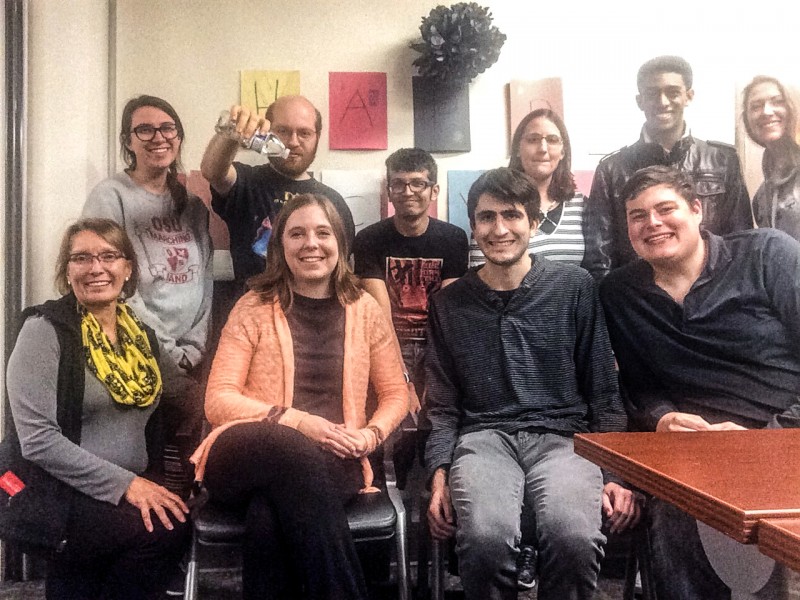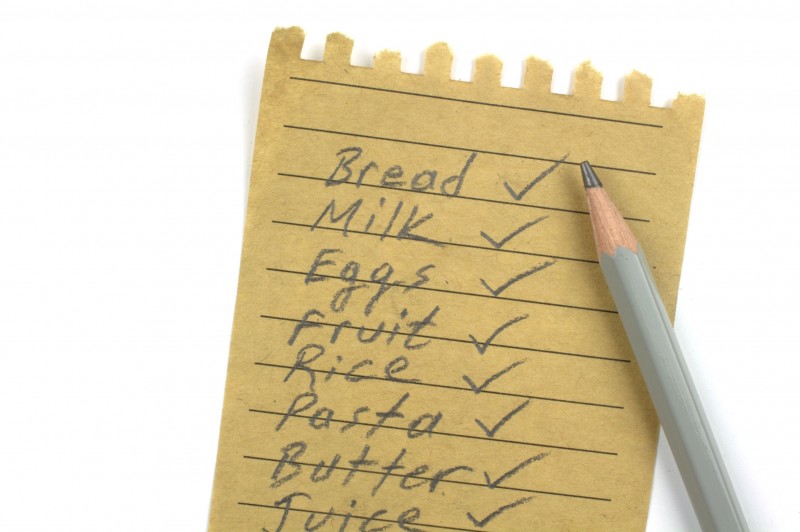
Kickstarting a brand new semester at Ohio State University, ACE! says goodbye to last year’s graduates and welcomes new first-year students into the program.
ACE! is a program led by students (and supervised by Nisonger Center directors) for OSU's autistic students. Each student’s educational track is monitored throughout the school year. In addition to academic support, the group meets weekly to learn and discuss topics of interest related to nutrition, movement, personal care, finances, and community involvement. It’s where they also eat a meal together and hang out for a few hours.
RELATED: Meal Prep Basics for the College Student
The curriculum caters to the needs of the students (individually and collectively); therefore, my role (the nutrition and movement component) continually changes from semester to semester. As you’ve read my previous lesson plans regarding food prep and indoor and outdoor training space, we begin in a grocery store this year. For this group, it was necessary to take a step back and not assume that the grocery store was familiar turf. Furthermore, I wanted to provide grocery store navigation tools to coincide with their intent to shop and prepare a meal stress-free.
As a two-part lesson plan series, this article gives you an inner view of the grocery store navigation tools I presented to the college students, along with their interpretation and feedback.
Step 1: Visit the Grocery Store
Traveling to the grocery store doesn’t have to be stressful or inconvenient. Surely there are things we can’t plan for (a whining child, a dropped jar of pickles, floor plan transfers), but there is a lot of personal planning we can do beforehand to make each grocery trip efficient and stress-free. Begin by visiting the grocery store. Choose a day you can spare 30 minutes to visit the grocery store to create a mental picture of every department. By doing so, in future visits a grocery list can accompany the shopping cart, which will essentially take you in a loop and lead you to the checkout section without backtracking efforts or getting lost.
What do you see as the doors open? As you walk in, where are the shopping carts? Locate the fresh produce section, bakery, meat department, dairy section, and frozen foods section. Where can you find bottled, boxed, or bagged items like water, rice, bread, and cereal? Locate oil cooking spray and spices. Notice how fresh foods are mostly on the outskirts of the grocery store. Are the boxed and canned foods primarily located within the center aisles of the grocery store? Locate the toiletries section to find personal care items like shampoo, deodorant, toothpaste, and razors.
If you needed help with a meat product, where could you locate the butcher? Where would the customer service department be if you wanted to open a rewards card account? If you needed to use the restroom or get a drink from the water fountain, where could you find them? What are other areas of the grocery store that are vital to you? The floral department? The office-supply aisle? The card section? The coffee lounge?
Consider drawing a very generic map as a future reference or take notes to review before your next shopping trip.
In the Classroom:
In class, the students said they were uncomfortable shopping in a grocery store. In fact, over half of the students had others (parents mostly) do the bulk of their shopping. When we discussed the stressors involved, they agreed that shopping for groceries took too much time and that impulse purchasing was unavoidable.
To reiterate the need for a visit, I passed out a sample grocery store floor plan — an example of what we could create if our only agenda were to make a map of our surroundings. Even though this was a sample, a few of the students immediately began finding similar features (departments and path) of this plan and shared how it compared to where they currently shop. Viewing the map was also an opportunity for them to realize that not all grocery stores are identical. Specifically, if we visit a few in the surrounding area in the future, there is a high chance we can find one that meets our needs better (a sushi bar instead of a salad bar or the floral department greeting us instead of produce).
As a group, we traveled to each department with our pens, creating a path from the entrance through every department, leading us to the checkout aisle and through the exit doors.
Image credit: Hayati Kayhan © 123RF.com
Step 2: Make a Grocery List
Now that you’ve visited the grocery store where you’ll shop regularly, it’s time to make an organized list for your next shopping visit.
What items do you need? Are you shopping for a meal, the day, or for an entire week? Once you figure this out, make a list of items needed. As a final edit, organize your list to complement the floor plan using your mental map or sketched map. Therefore, if the produce section is what the entrance doors open up to, list all your produce items at the top of the list. If the bakery follows, list your bakery goods next. Continue until each item on your list is accounted for, respective to the floor plan. Your end goal is to make a loop around the store without backtracking. The last item should be the closest to the checkout station.
In the Classroom:
Creating a list of foods, whether for a meal, a day, or a week, was quite bizarre to this group — as if it had never crossed their minds. They quickly voiced how this could save time and minimize the impulse to buy foods based on hunger, marketing brilliance, or boredom.
Next, I passed out a list of ingredients (in no particular order) purchased for the night’s dinner. Using the floor plan and our path as a guide, we rewrote the list accordingly — eliminating the chance of backtracking, getting lost, or worse, forgetting any item. This exercise took about five minutes. You could feel the sense of satiety as the students reorganized their lists to match the floor plan’s path.

As you can see, for these students, it was necessary to take a step back and not assume that the grocery store was familiar turf. To minimize stress, lost time, and dwindling funds, providing grocery store navigation tools to coincide with their intent to shop and prepare a meal was key. Be sure to use these guidelines when shopping at the local mall (or any other shopping endeavor that screams unfamiliarity, hesitancy, and chaos) for a child or adult with autism under your care.
Next month we’ll use these guidelines as we travel to Lucky’s Market on High Street in Columbus, Ohio. The objective of this store visit will turn theory into practice as the students prepare for a Thanksgiving feast.
Header image credit: Gui Yongnian © 123RF.com
Originally published in October of 2017
Author of The Power of a Note, Sheena Leedham earned her master’s degree in education at Edinboro University with a concentration in elementary education and recreation administration. Through the Ohio State University’s Nisonger Center, she coordinates Men’s Aspirations, a social support group event for teens and young adults with autism to experience the Greater Columbus Area. As a licensed teacher, Sheena serves as an education consultant for OSU’s Autism College Experience (ACE!) and Postsecondary Access to Transition after High School (PATH) programs, where she educates college students with autism on the importance of habitual fitness and proper nutrition. Sheena is also the Senior Content Manager at elitefts.com—educating and outfitting the strongest athletes around the world.












1 Comment